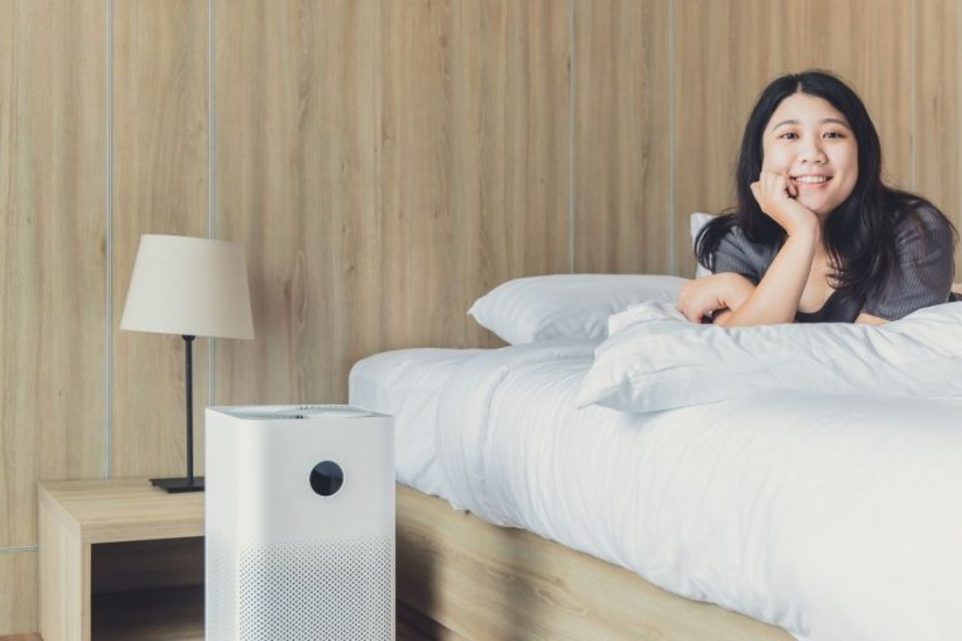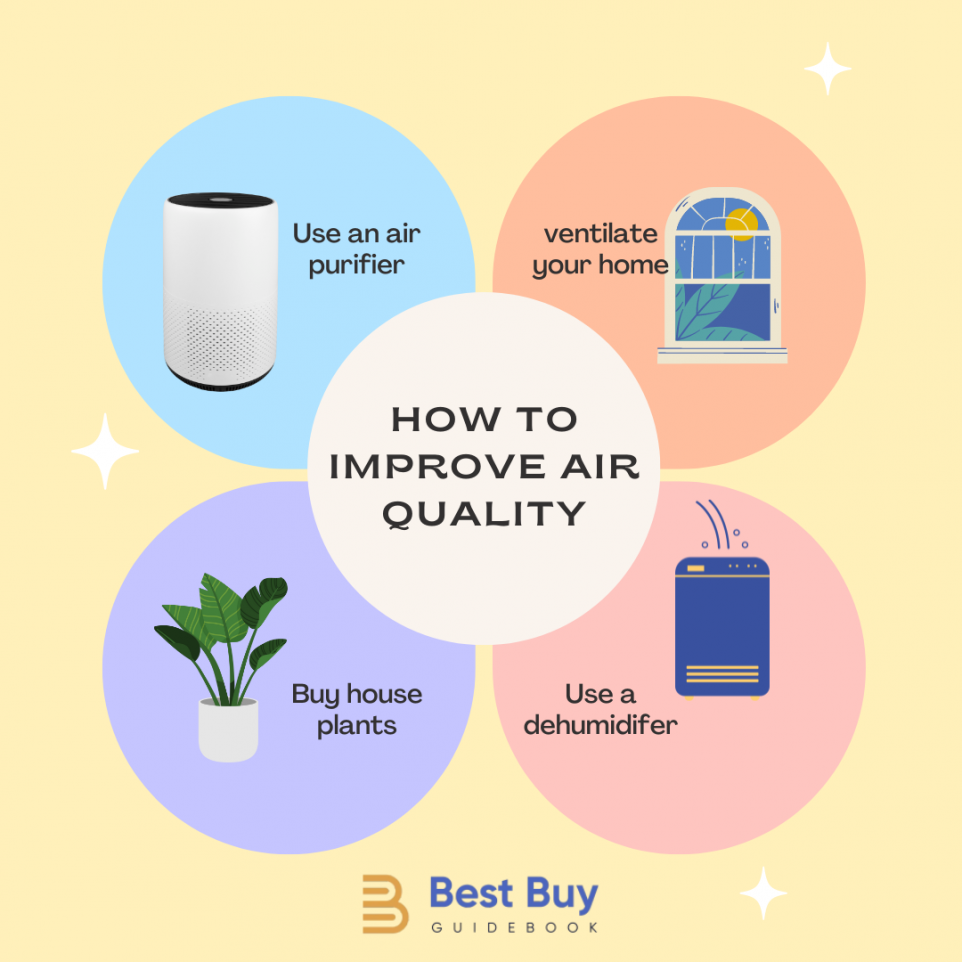How To Improve Home Air Quality for Better Sleep

A good night’s sleep is essential for our physical and mental well-being, but many of us struggle to get the rest we need, particularly those dealing with sleep disorders like sleep apnea or insomnia. While we often focus on factors like mattress comfort and bedtime routines, one frequently overlooked element significantly impacts sleep quality: indoor air quality.
Poor air quality can lead to discomfort, allergies, and breathing difficulties, all of which can disrupt sleep patterns. In this comprehensive guide, we’ll delve into practical strategies to enhance air quality in your home, ultimately creating a sleep-friendly environment that promotes restorative and refreshing slumber.
Why Indoor Air Quality Matters
Imagine your home as a little ecosystem. Every day, all kinds of invisible guests like cooking fumes from your kitchen, vapors from cleaning products stashed under the sink, or emissions from that chic but chemically treated decorative rug accumulate in this enclosed space. Unlike the outdoors, where pollutants can disperse, these irritants often get trapped inside our homes, especially with modern buildings designed to be airtight for energy efficiency.
Modern homes are great for keeping heat in and drafts out, but they’re not so great at letting the house ‘breathe.’ Traditional homes used to have a natural ventilation rate of about 10 to 12 air changes per hour—that’s the entire volume of air inside the home being replaced every five to six minutes! Now, with advancements in construction and the use of materials like spray foam, the average has dropped significantly. In some places, like Massachusetts, building codes have tightened this to as few as three air changes per hour. This reduced airflow means pollutants have fewer escape routes, concentrating the indoor air pollution even more.
Understanding what’s in your air is the first step to managing it. Air quality monitors come into play here, equipped with sensors to detect various pollutants like carbon dioxide, which we exhale; volatile organic compounds (VOCs) from paints and furniture; and particulate matter from cooking and other activities. These tiny particles are particularly sneaky as they’re small enough to be inhaled deep into our lungs and even enter our bloodstream.
While no single device can detect everything in the air, choosing the right one can help you pinpoint specific concerns. For instance, if you’re worried about the effects of your gas stove, a monitor that tracks VOCs and particulate matter would be ideal. When these monitors detect high levels of pollutants, they don’t just silently tick up the numbers; many can alert you via lights or send notifications straight to your phone, helping you take immediate action.

How to Enhance Air Quality
Ever thought about what’s floating around in the air at home? While you might not see it, our cozy spaces can be buzzing with more than just family chatter. From pet dander and dust mites to the invisible chemicals from our favorite cleaners and even our chic furniture, our homes can harbor a mix of pollutants that might surprise you.
Kick Off Your Shoes: Start with a no-shoes policy. Those stylish sneakers? They could be tracking in everything from pesticides to all sorts of bacteria (imagine a shocking 421,000 bacteria units from the outside). Just by ditching shoes at the door, you can significantly cut down on the dirt and toxins entering your living space.
Smoke Outdoors: Smoking indoors is a big no-no. Not only does it leave a lingering scent that no candle can mask, but it also significantly contributes to indoor pollution. Secondhand smoke exposes everyone at home to the risk of respiratory diseases and even heart conditions. So, keep those cigarettes outside, always.
Install a Carbon Monoxide Detector: This is a big one. Carbon monoxide is odorless and colorless, and it can be deadly. Symptoms of poisoning might mimic the flu, but they worsen at home and improve when you’re out and about. Placing detectors near sleeping areas can save lives, especially in homes with fuel-burning appliances.
Ventilate, Ventilate, Ventilate: Good airflow is crucial. It helps shuffle out the stale indoor air and brings in the fresh. Open those windows and doors whenever you can, especially during times of low outdoor traffic to minimize pollution intake. Consider installing trickle ventilators, which continuously bring in fresh air and filter out the bad particles.
Keep Your AC Clean: Your air conditioner does more than keep you cool; it can help filter out impurities from the air. Regular maintenance and cleaning of the AC filters are essential to ensure they’re trapping pollen and dust effectively and not just recirculating polluted air.
Choose Your Decor Wisely: It’s not just about style; it’s about health too. Opt for furniture and decorations that don’t release harmful chemicals. Low-VOC paints, natural wood products, and avoiding synthetic fragrances can drastically reduce your home’s chemical load.
Consider Beeswax Candles and Activated Charcoal: Beeswax candles do more than set the mood; they actually purify the air by releasing negative ions that bind with toxins and help remove them from the air. Activated charcoal is another great purifier, used in air filters to capture and reduce pollutants effectively.
Reduce Formaldehyde Exposure: This sneaky chemical can be found in everything from furniture to household cleaning products. It’s known to cause irritation and more severe health issues over time. Opt for alternatives that don’t use formaldehyde-based ingredients, especially in products like glues and adhesives.
Stay Natural with Scents: We all love a fresh-smelling home, but synthetic fragrances in air fresheners and scented candles can contribute to indoor air pollution. They release volatile organic compounds (VOCs) into the air, which can trigger allergies and asthma. Stick to natural oils or fragrance-free products.
Declutter and Dust Regularly: Less stuff means less dust. Keep your spaces minimal and dust often with a damp cloth. This traps and removes dust instead of sending it back into the air. Don’t forget to tackle areas under furniture and other often-missed spots where pollutants can accumulate.
Decades of Combined Expertise
Best Buy Guidebook is a culmination of online publishing lessons learned. From SEO to paid ads, our team has experienced the highest of highs and the lowest of lows. Our goal now is simple: Arm readers with the most information possible.
